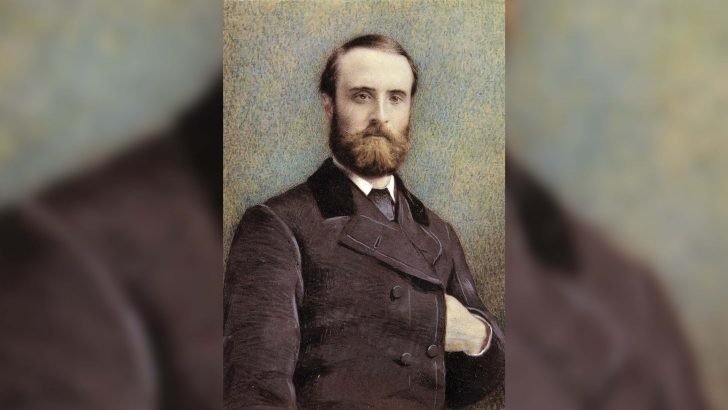Parnell and his times
ed. by Joep Leerssen (Cambridge University Press, £30.00)
Felix M. Larkin
It is often difficult to find an appropriate print outlet for a scholarly paper prepared for a particular occasion or otherwise in a very specific context. The fruits of much research and reflection are thereby lost.
A volume like this is, therefore, greatly to be welcomed. It salvages and brings together a selection of such papers by some of those who have held the Parnell Fellowship at Magdalene College, Cambridge. Insofar as the papers are linked thematically – and it is, at best, a tenuous link – it is by the sense that Parnell changed Ireland.
Parnell’s legacy was a revolution on two fronts: in the words of Clair Wills in this volume, “political revolution and the revolution of the word”. The seventeen papers that comprise the chapters of this volume are, accordingly, divided into two sections – one focused on the political and social, and the other on the literary.
Joep Leerssen describes Parnell in his introduction to the volume as “the last great [Irish] parliamentary statesman, successor to Grattan and O’Connell”. He notes that “charisma seems an important key to understanding the appeal of Parnell and the fact that this appeal continued even after his passing”.
Leadership
His introduction is a meditation on the nature of charismatic leadership as defined by Max Weber and exemplified by Parnell. The impact of Parnell’s charisma, during his lifetime and afterwards, justifies the conceit implicit in this volume that the period from the late 1870s to the early years of the new independent Irish state were “his times” – that is, of his making.
The nature of Parnell’s influence on later Irish politicians of all shades of nationalist opinion is outlined by Roy Foster in a chapter entitled “Parnell to Pearse”. He points out (as does Declan Kiberd in another chapter) that even PH Pearse was prepared to consider adding Parnell to his “four evangelists” of Irish republicanism – Tone, Davis, Lalor and Mitchell.
Moreover, he argues that the Irish Free State that emerged in 1922 approximated in constitutional status to the kind of Dominion Home Rule sought by Parnell – and that the new Dominion was “characterised by the social results of the subsidised revolution in land ownership which Parnell had brought into being [and] by the kind of Westminster-inspired political structures which he had mastered”.
Parnell’s impact – or, more precisely, the impact of Parnell’s fall – on modern Irish literature is perhaps more generally recognised than his political legacy. Both Foster and Wills remind us in their chapters of Yeats’ claim that “the modern literature of Ireland … began when Parnell fell from power in 1891”.
There was a shift in Irish nationalism away from politics and towards the cultural arena. Wills, indeed, remarks that “Joyce’s A Portrait of the Artist as a Young Man neatly dramatizes the argument Yeats made … as the young Dedalus turns away from the melancholy politics of his Parnellite father (‘Poor Parnell! He cried loudly. My dead king!’) to devote himself to an art fitted for ‘the uncreated conscience’ of his race”.
In a chapter on Irish anthologies, Leerssen shows that there were other influences at work as well in shaping the Irish Literary Revival. He writes that “nineteenth-century Irish culture was deeply engrossed in acts of translation”, rescuing “Gaelic literature and Gaelic culture from the wreck of the Gaelic language and giving it a new lease on life in an English-speaking social setting”.
This provided solid foundations for the literature of Ireland that emerged after Parnell. Joyce satirised the Gaelic element in that literature in Finnegans Wake as “the twattering of bards in the twitterlitter between Druidia and the Deepsleep dreams”, quoted in a chapter by Edna Longley on Yeats and Joyce – the twin peaks of the Irish Literary Revival.
Chapter
Raymond Gillespie contributes a chapter on religion in Ireland in 1891, based on his analysis of census data. He is particularly concerned with the “disjuncture between confessional allegiance and belief”. Parnell’s religious affiliation serves as an example of this disjuncture: though baptised in the Church of Ireland and a member of both the select vestry of Rathdrum parish – which included his Avondale estate – and the synod of the diocese of Glendalough, it appears that his views tended towards those of the Plymouth Brethren, whose presence in county Wicklow dated back to the 1830s.
Notwithstanding this window that Gillespie opens into Parnell’s inner convictions – and indeed his soul – and despite Parnell’s extraordinary legacy to the people of Ireland, he remains something of an enigma (to borrow the title of a biography of him by Paul Bew, published in 2011). To his contemporaries, the enigma was surely part of his charisma.


 Parnell in the heyday
of his power
Parnell in the heyday
of his power 